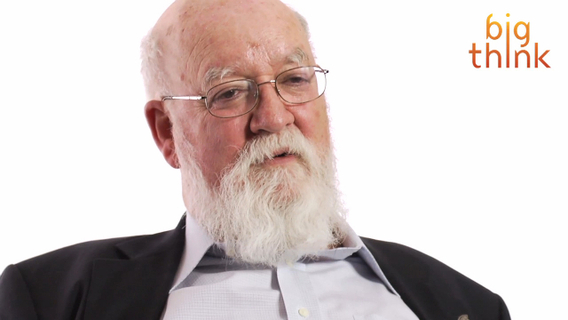Make Your Commodities Stand Out – De-commoditization is the Key

No matter what industry you’re in, chances are you have a few products or services in your line that are commodities. From food and beverage items to household products to daily services, commodities are everywhere and make bottom line profits harder and harder to attain.
Companies that sell commodities typically must offer low prices and deal with slim margins. Why? Because the customers’ perception of the product or service is one of ambivalence. In the customers’ mind, the product or service is just like everyone else’s, so there’s no reason to pay more for it. Whether the item is water, car brakes, an electric utility service, copy paper, or one of the millions of other commoditized offerings, customers believe what they get from one company is identical to what they can get from another.
So what’s a business to do? The answer is to de-commoditize…but not just once…continuously!
For example, suppose you sell flashlights. To customers, a flashlight is a flashlight and you can only charge so much for one. But what if you made your flashlight last twice as long? Now you can charge more for it. However, don’t stop there. Later you can add more unique aspects to your flashlight, such as making it half the size or twice as bright. Now you can continue charging more for your flashlight.
Here’s another example: Water is water…until you put it in a bottle. Once you put water in a bottle, you can charge for it. You can then put the water in a fancier bottle and charge some more. You can also add some vitamins to it, give it a fancy name, and charge even more. Now you’ve taken a commodity and you’ve de-commoditized it.
The fact is that every product and service can be de-commoditized repeatedly. Unfortunately, most businesses don’t do this. Instead, they come up with a new product or service and they milk it. They make their money on it and let the product or service become a commodity.
Realize that the minute you come up with something new, a competitor will copy it. As they do so, your de-commoditized and innovative product or service slowly becomes a commodity. The margins get thinner as time goes on. You find yourself competing more on price and eventually remove the product or service from your line.
Here’s a better approach: Instead of letting the margins get thinner and riding them down, you can get more efficient and effective. You can think creatively about your product or service so you can repackage it, redefine it, revamp it, or somehow make it unique in the marketplace again. Following are some suggestions and examples of how to do that.
Pay close attention to the trends going on in your industry and with your customers. Based on the direction of change that you can see, what future trends can you identify? If you can accurately pinpoint where your industry or customers will be in the next few months or years (or what your customers will want), you can de-commoditize your offering and get that business.
For example, the product 7UP was a commodity for many years. 7UP and the other products like it are basically bubbly, clear flavored sugar water. For many years, 7UP was dealing with shrinking margins and lower sales. People were drinking less soda and more water and other non-carbonated drinks. Recognizing the trend for customers to want healthier drink options, 7UP de-commoditized their soda by taking out all the artificial flavorings and ingredients and making their product natural. After they launched their new “natural” campaign, sales of 7UP increased.
But, as is the nature of commoditization, over time competitors will start copying what 7UP did and the soda will become a commodity again. So instead of riding it back down again to decreasing sales and low margins, 7UP can take the next step and make all their natural ingredients organic. But rather than do what other companies do with the organic label, which is to stretch the definition, 7UP raised the bar and did organic the way it should be done. Now they’re de-commoditizing again. And as trends with their customers continue to change, so too should the soda.
No matter how mundane your product or service is, chances are people have different needs around it today than they did a few short years ago. As the world, economy, and culture changes, so do people. Their reasons for buying something yesterday may be different from their reasons today. As such, you need to always be looking at what your customers’ current and near-future needs are and then find ways to de-commoditize your product accordingly.
For example, most people think electricity is electricity. Whether you turn on your lights at home or at work, the current running through the wires is the same. Complicating the utility industry more is that in some locations, if you want to raise your rates, you have to get your customers to agree to the rate increase. So how can you de-commoditize electricity? Look at the customers’ needs.
Consider that most businesses these days have a lot of computers, servers and other equipment. They can’t afford to lose their electricity no matter how big of a storm comes through. They also don’t want the electricity to vary in voltage, as that can harm sensitive equipment. So what if the electricity company offered “digital electricity,” which never went out and never fluctuated? Yes, it would cost more, but if the need is there, people will pay for it.
That’s exactly what happened when one electricity provider started offering its business customers digital electricity. Big companies like Microsoft, Google, and Yahoo signed up. But this electricity company shouldn’t stop there. Today’s homes also have multiple computers, entertainment centers, gaming equipment, and other things connected to electricity. There’s no reason that consumers wouldn’t want digital electricity as well.
So look at your product or service and identify a new need people have. Then, put a service wrapper around the item so you can charge more for it.
Look at every product and service you have and ask, “Why is this item a commodity?” Then ask, “What can we do to make it different?” For example, look at the features and functions of your products, how things are housed, how convenient the product or service is, what the customer experience is like, how something is processed or made, etc.
With the bottled water example, could you change the bottle, filter the water more, or add flavors or vitamins to it? If you sell coffee, could you enhance the customer’s experience or change a familiar product into something unique? For example, Starbucks moved meeting for a cup of coffee from the local diner to a relaxing coffee shop. Then they took good old-fashioned coffee and transformed it into tasty coffee drinks that even non-coffee drinkers would love. Between flavoring hot coffee and blending iced coffee, they made drinking coffee an experience rather than a commodity you buy at the grocery store.
Continuously De-Commoditize
The key to really understanding and embracing this concept is to realize that every product and service can be de-commoditized. Yes, it takes some creativity, thinking, and trend watching. But the biggest thing it takes is for you to get rid of your assumption that something can’t be de-commoditized. Most of us have learned to live with commodity items. So maybe tissues are tissues, but chances are the ones you buy and pay more money for are softer, or they have aloe, or they have anti-virus ingredients, or they come in a designer box. The possibilities for changes exist for everything.
As you de-commoditize your items, remember that if you de-commoditize once and sit back, that de-commoditized item will soon become a commodity. So do continuous de-commoditization. Not only will you attain better margins and accelerated growth based on hard trends, but you’ll also find yourself positioned ahead of the competition.
*****
DANIEL BURRUS is considered one of the world’s leading technology forecasters and innovation experts, and is the founder and CEO of Burrus Research, a research and consulting firm that monitors global advancements in technology driven trends to help clients understand how technological, social and business forces are converging to create enormous untapped opportunities. He is the author of six books including The New York Times best seller Flash Foresight.





